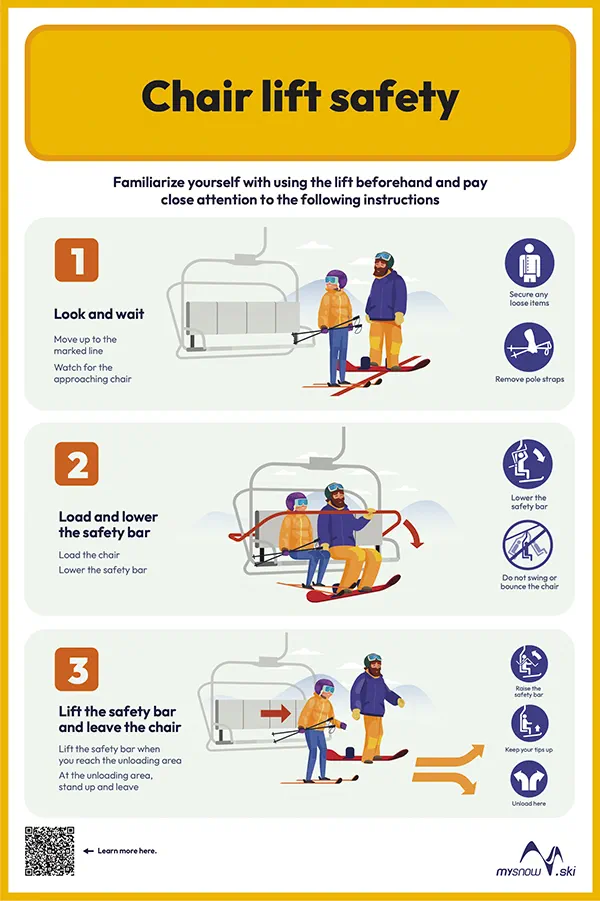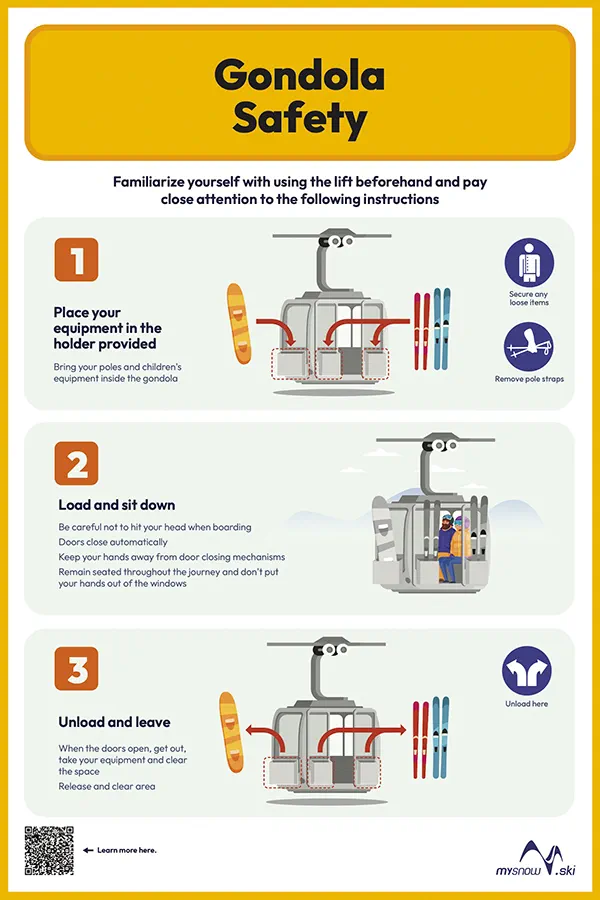Code of Conduct and Safety on the Mountain
Play safe at Tremblant
rich-text, responsive-table
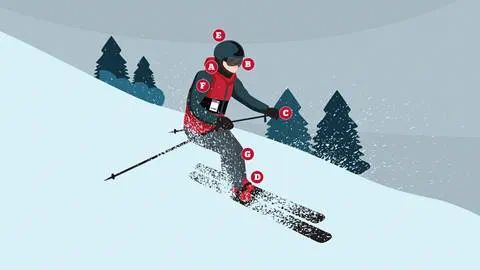

rich-text, responsive-table
For a safe day on the slopes
Ensure that you follow fundamental points pulled from the Mountain Code of Conduct and the safety rules to safely use the trails at Tremblant. On the slopes, our ski patrollers ensure your safety through prevention and first aid services. Regardless of your equipment – alpine skis, snowboards, telemark skis, cross-country skis and specialized equipment for people with disabilities – be safety conscious and; it’s your responsibility!rich-text, responsive-table
-
The primary safety consideration - and obligation under the mountain code of conduct - is to ski and ride in a controlled and responsible manner. Any contravention of the mountain code of conduct or reprehensible behaviour may cause a revocation of your privileges that your lift ticket or season pass confers. rich-text, responsive-table
-
Be careful on the lifts
- Ask the lift attendant for help if you’re not familiar with how it operates.
- Obey all signs posted on lift towers.
- Take a look on the boarding techniques for each lift type:
accordion, accordion-placeholderMagic Carpet
Chairlift
Gondola
[No Associated Data Item]rich-text, responsive-tablecarousel-componentSki and ride with extreme caution
Skiers and riders should be advised that a Green Circle, Blue Square, Black Diamond or Double Black Diamond trail at your area is not necessarily the same as a similarly rated trail at another area. The system is a relative system that is valid only at this area. Skiers and riders should work their way up, beginning with the easiest trails, no matter what their ability level may be, until they are familiar with the trails at this area. rich-text, responsive-table
Plan your runs
- Find the trails that suit your abilities (check the symbols).
- Accidents can happen when skiers and snowboarders attempt trails that are above their skill and experience level. Before heading down the mountain, plan your route using a trail map.
Stay a safe distance from others
- Avoid collisions on the slopes by leaving sufficient space all around you. If there are children present, slow down and give them even more space. Given that skiers and boarders can make abrupt turns in any direction, be sure to always stay in control.
Stop on the side of the trail
- Make sure you can be seen from every direction.
- If you must stop, do it on the edge of the trail, in a spot where you will be visible to other skiers and boarders.
- Give priority to people who are further down the slope and choose the direction that will ensure their safety.
- It is your responsibility to avoid running into people who are lower down the trail. Be prepared for them to suddenly change speed or direction.
 rich-text, responsive-table
rich-text, responsive-table
-
Several tools are used to warn skiers of hazards on the trails: ropes, bamboo and signs will direct you. You must respect them. Please note that fences, flags, signage, protection pads or any other equipment used to identify potential danger are used as indicators and are not under any circumstances a guarantee of security. You are held responsible, according to the Code of Conduct, for avoiding all obstacles including those not identified by the resort. rich-text, responsive-table

Caution
Indicates presence of a hazard. Installed 5 to 15 meters before danger rich-text, responsive-table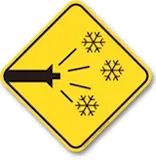
Snowguns
Indicates that mobile snowguns are installed in the trail (even if they are not in operation) or when permanent snowguns are in operation. Installed at the entrance to the trail and at each entry point. rich-text, responsive-table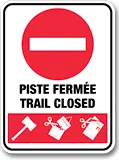
Trail Closed
Indicates that access to the trail is closed. Installed at the start of the trail and at each entry point. This sign is placed behind the rope and bamboos. rich-text, responsive-table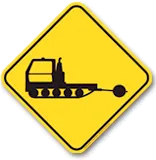
Machines in operation
Indicates that grooming machines are at work. Installed at the entrance to the trail and at each entry point. This sign is accompanied by the Trail Closed sign and is placed behind the rope and bamboos. rich-text, responsive-table
Caution
Installed at the entrance of certain trails (ex: Émotion, Brasse Camarade, Bouleaux, Buzz) where conditions are usually good but where unmarked objects are permanently present. (rocks, branches, stumps.) rich-text, responsive-table
Course
Indicates that part of the trail or the entire trail is reserved for gate training or for a race. rich-text, responsive-table
Moguls
Indicates the presence of moguls in the trail. Installed at the entrance of the trail and at each access point when there are moguls that cannot be seen from the entrance. rich-text, responsive-table
Rock
Indicates the presence of many rocks that cannot be seen and that are not marked on the trail. Installed at the entrance to the trail and at each entry point. rich-text, responsive-table
Narrowing
Shows a narrowing of the trail Installed 5 to 15 metres above the site. rich-text, responsive-table
Marginal Conditions
Indicates the presence of uncovered rocks, spots, ice, etc. The trail is about to be closed and it must still be a possible to go down it with a ski patrol sled. Installed at the entrance of the trail and each entry point. rich-text, responsive-table
Trans-Tremblant
Snowmobile trail sign (one route on the South Side, one route on the North Side). Sign placed on blind spots for skiers or snowmobiles. rich-text, responsive-table
Yield
You must yield to the other skiers. rich-text, responsive-tableBamboo Deviation
2 or 3 bamboos inclined toward the direction the skier must take. rich-text, responsive-tableBamboo Obstaclemarking
2 bamboos installed above an obstacle (indicated that skiers can avoid the obstacle on its right or left). rich-text, responsive-tableBamboo Trail Edge Boundary
Installed where there is a marked difference between two surfaces. Bamboos installed straight, visible from one to the next with +/- 10 to 15 meters between each. rich-text, responsive-tableBamboo Narrow Trail
Bamboo indicating the direction that must be taken by the skier on top of the trail, followed by bamboos installed straight, visible from one to the next with +/- 10 to 15 meters between each, giving the limits of the open trail. rich-text, responsive-table -
Slow zones
Remember, you are sharing the slopes with other skiers and boarders. Be cautious at all times. Yellow marked zones prohibit speed. Due to high traffic, please have the courtesy to ski or ride more slowly in these areas.
Learning zones
The learning zones guarantee peace of mind like nowhere else on the mountain. These trail segments, identified by a green-shaded area, are dedicated to beginner skiers and riders. Speed is strictly forbidden in this area. rich-text, responsive-tableAscent zones
Use these specific areas to climb the mountain with touring equipment (alpine touring, snowshoeing). A valid daily access or season pass is required for climbing skiers. Remain on the side of the trail at all times and in a single file when climbing with others. Respect the mountain’s Code of Conduct at all times. rich-text, responsive-table -
Glades are expert terrain and may contain:
- Hidden Natural Obstacles
- Narrow Stretches
- Sudden Direction Change
- Blind Corners
- Natural un-groomed snow conditions which may include exposed rocks and bare spots.
-
Equipment allowed
- Alpine skis (traditional, parabolic, telemark, twin-tip) with compliant bindings with a retention and detachment system in the event of a fall
- Snowboard (retention system highly recommended)
- Snowblades
- Sled dogs skates (ODR)
All other equipment is prohibited, including:
- Cross-country skis (classic, no skates, off-piste equipped with edges, etc.)
- Sled, toboggan, tube, saucer, crazy carpet, etc.
- Snowfeet
- Snowboard Snowskate
- Snow scooter
- Bike-skis
- Fatbike
- Dual Board
Baby carrier
For security reasons, we do not allow to ski or ride while carrying a child in any type of backpack or baby carrier.
However, we authorize alpine touring with the option of descending in the gondola. rich-text, responsive-table rich-text, responsive-table
rich-text, responsive-table
rich-text, responsive-table
Play safe
rich-text, responsive-table
- Tremblant recommends wearing helmet for skiing and riding.
- The helmet is mandatory for all snowpark users, kids 12 years old and under taking ski lessons with Tremblant Snow School and all kids and adults in racing and freestyle programs. All employees working on the mountain must also wear a helmet while on duty on the mountain.
- The helmet is included with winter equipment rentals.
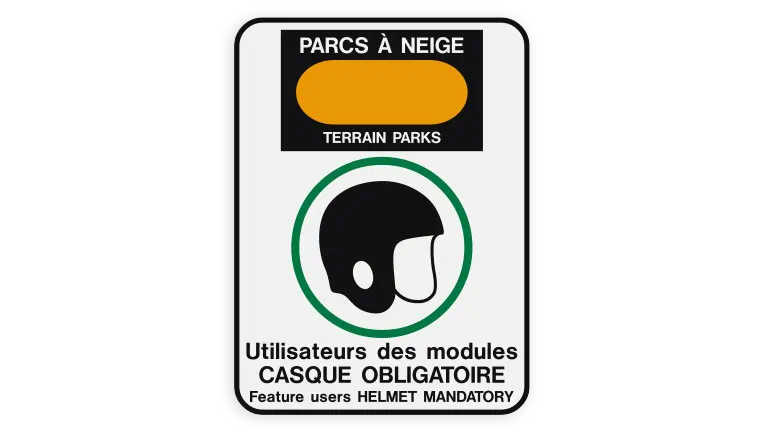 rich-text, responsive-table
rich-text, responsive-table











